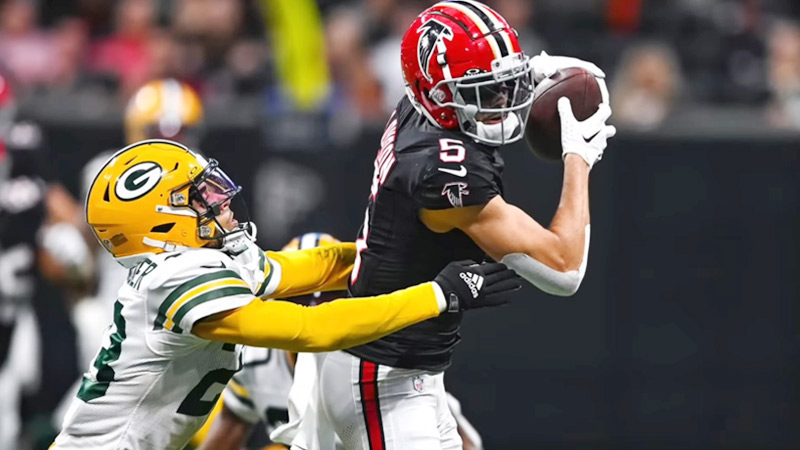Step into the exhilarating world of American football, a sport that goes beyond the touchdowns and tackles, revealing a rich tapestry of strategy, athleticism, and unbridled passion.
Each play unfolds as a unique chapter in a gripping narrative, where quarterbacks become tacticians, running backs showcase their agility, and safeties are guardians of the gridiron.
In this exploration, we navigate through the game’s complexities, uncovering the stories behind each position and the symphony of teamwork that defines every match.
American football isn’t just a game; it’s a cultural phenomenon that sparks adrenaline, camaraderie, and an enduring connection between players and fans.
Join us as we embark on a journey through the iconic moments and nuances that make American football a thrilling spectacle cherished by millions around the globe.
The Basics of the Safety Position in Football
In American football, the safety position is a critical defensive position typically found in the secondary, the part of the defense responsible for covering the deep areas of the field.
Safeties are crucial in preventing the opposing team’s passing game and providing support against the run.
There are generally two types of safety: free safety and strong safety. Here are the basics of the safety position in football:
Free Safety
The free safety (FS) is positioned more profoundly in the secondary, usually in the centre of the field. They are the last line of defence responsible for preventing long passes and big plays.
- Coverage Responsibilities: Free safeties are often involved in covering the deep middle part of the field, and they may be tasked with helping cover wide receivers or tight ends in passing situations.
- Play Recognition: Recognizing offensive formations and play development is crucial. Free safety measures must be used to diagnose plays quickly and react appropriately.
- Ball Skills: Good free safeties have excellent ball skills, meaning they can track and catch passes effectively.
- Tackling: While their primary responsibility is pass coverage, free safeties should also be solid tacklers, especially when coming up to support against the run.
Strong Safety
The strong safety (SS) is positioned closer to the scrimmage line than the free safety. They are often in or near the box, providing additional run support and helping defend against short to intermediate passes.
- Coverage Responsibilities: Strong safeties typically cover tight ends, provide run support, and defend against short to intermediate passes. They may also be assigned to blitz the quarterback on certain plays.
- Physicality: Strong safeties are generally more physical players, as they often stop the run and engage in close-quarters coverage.
- Tackling: Tackling is a crucial skill for strong safeties, as they are frequently involved in plays near the line of scrimmage.
- Communication: Safeties must communicate effectively with cornerbacks to ensure proper coverage assignments and adjustments based on offensive formations.
Sometimes, safeties may make pre-snap coverage calls to adjust the defense based on the offensive alignment.
Understanding the roles and responsibilities of free and robust safeties is essential for a cohesive and effective defensive unit.
The combination of coverage skills, recognition abilities, and tackling proficiency makes safety a versatile and critical component of a football defence.
The Evolution of the Safety Position in American Football
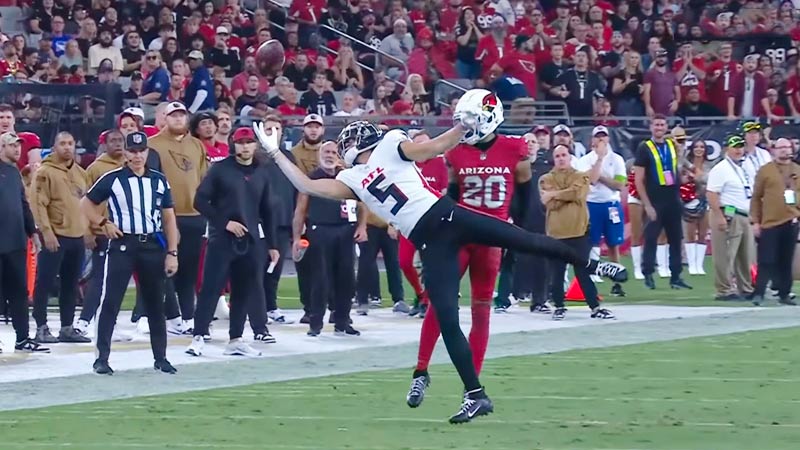
The safety position in American football has evolved over the years, adapting to changes in offensive strategies, rule modifications, and overall developments in the game.
Here are critical aspects of the evolution of the safety position:
Early Days (Pre-1950s)
In the early days of football, defensive positions were not as specialized as today.
Safeties were often just part of the overall defensive unit, with less emphasis on specific roles and responsibilities.
1950s-1960s: Specialization Begins
As offensive passing games became more prominent, the need for players with better coverage skills increased.
Safeties began to specialize in covering the deep part of the field, primarily as the passing game evolved.
1970s: Strong Safety Emergence
The strong safety position gained prominence during this era, with players like Jack Tatum and Ronnie Lott becoming known for their physicality and ability to support against the run.
Defences started to employ a combination of deep-coverage-free safety and more physically strong safety.
1980s-1990s: Coverage Emphasis
With the West Coast Offense and other pass-oriented offences gaining popularity, safeties became even more critical in coverage.
Free safeties were often tasked with reading quarterbacks and making plays on the ball, while solid safeties needed to be versatile in both coverage and support.
2000s: Versatility and Playmaking
The role of safeties expanded to include greater versatility, requiring them to be effective in various situations.
Safeties were expected to cover deep passes, port against the run, and be playmakers, creating turnovers and scoring opportunities for the defence.
2010s-Present: Hybrid Safety and Rule Changes
The “hybrid safety” concept emerged, referring to safeties who could excel in coverage, blitzing, and run support.
Rule changes, particularly those protecting defenseless receivers, impacted how safeties approached tackling and coverage to avoid penalties.
Increased Emphasis on Speed and Agility
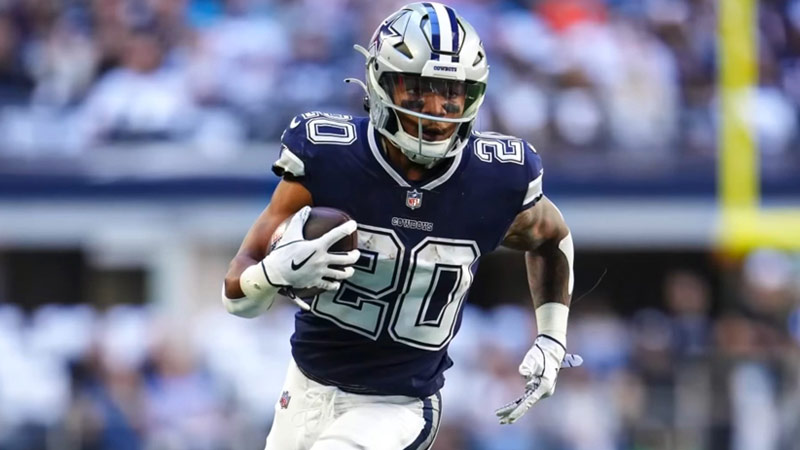
With the rise of spread offences and up-tempo play, safeties must have exceptional speed and agility to cover a more extensive field area.
Teams started looking for safeties who could cover ground quickly, read plays, and contribute to pass and run defense.
Communication and Leadership
Modern safety leaders are often in the secondary, responsible for communication and ensuring proper coverage assignments.
Safeties are expected to understand offensive schemes, make quick decisions, and adjust coverages based on pre-snap reads.
Technological Advances
Technology, such as video analysis and advanced statistics, has allowed safeties to study opponents more comprehensively, improving preparation and strategic decision-making.
The safety position has evolved from a general defensive role to a specialized, multifaceted position requiring coverage skills, tackling ability, versatility, and leadership.
The changing nature of the game, offensive strategies, and rule modifications continue to shape the role of safeties in modern American football.
Responsibilities and Duties of Players in Safety Positions
The responsibilities and duties of players in safety positions, whether free safety (FS) or strong safety (SS), are diverse and multifaceted.
The specific roles can vary depending on the defensive scheme, coaching philosophy, and individual players’ strengths, but here is a general overview of the critical responsibilities for each safety position.
Free Safety (FS)
- Deep Coverage: The primary responsibility of free safety is to provide deep coverage, preventing long passes and defending against deep routes. Read the quarterback’s eyes and anticipate the trajectory of the throw.
- Centerfielder Role: Often referred to as the “centerfielder,” the free safety patrols the middle of the field, helping to eliminate big plays.
- Ball Hawk: Possess strong ball skills to track and intercept passes. Create turnovers and capitalize on opportunities to change the momentum of the game.
- Communication: Communicate effectively with other secondary members, including cornerbacks and strong safety. Make pre-snap adjustments and call coverages as needed.
- Run Support: Support against the run, especially if the ball carrier breaks through the front seven. Tackle effectively and contribute to stopping the run.
Strong Safety (SS)
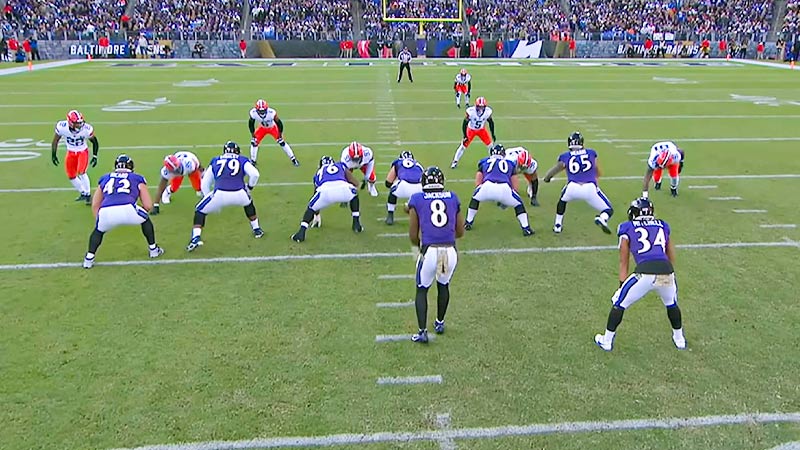
- Box Presence: Strong safeties often play closer to the line of scrimmage and are involved in the “box,” contributing to run defense and pass rush. Defend against short to intermediate passes and support against the run.
- Tackling: Strong tackling skills are crucial for solid safeties, as they are often involved in stopping ball carriers near the line of scrimmage. Wrap up securely and bring down the opponent with authority.
- Coverage: Cover tight ends, slot receivers, and sometimes wide receivers in various coverage schemes. Help defend against crossing routes and provide physical coverage against more prominent offensive players.
- Blitzing: Some defensive schemes may require strong safeties to blitz the quarterback. Time blitzes disrupt the quarterback’s rhythm and contribute to the pass rush.
- Recognition and Reaction: Quickly recognize offensive plays and react accordingly, whether moving into coverage, supporting the run, or blitzing. Anticipate the opponent’s moves based on pre-snap reads.
Both Free and Strong Safeties
- Versatility: Modern safeties are expected to be versatile, excelling in pass coverage and support. Adapt to different offensive schemes and adjust their play accordingly.
- Leadership and Communication: Act as leaders in the secondary, providing guidance and communication to ensure everyone is on the same page. Help organize and coordinate the defensive backfield.
- Film Study: Study film to understand opponents’ tendencies, offensive formations, and individual player tendencies. Use this knowledge to make informed decisions during games.
- Adaptability: Safeties must adjust their play based on game situations, opponent strategies, and the specific game plan devised by the coaching staff.
Football players in safety positions are crucial components of a football defense, contributing to pass coverage and run support.
Their ability to read plays, communicate effectively, tackle securely, and make impactful plays on the ball is essential for the success of the overall defensive unit.
Core Skills for a Successful Safety
To be a successful safety in American football, players must possess physical and mental skills. The safety position requires versatility, as players must excel in pass coverage and support. Here are the core skills for a successful safety:
Coverage Skills
The ability to cover tight ends, slot receivers, and occasionally wide receivers in man-to-man situations.
Understand zone coverages and effectively patrol a designated area of the field. React quickly to plays and anticipate where the ball will be thrown.
Strong ball-hawking abilities include tracking the ball in the air, making interceptions, disrupting passes, and creating turnovers.
Tackling and Physicality
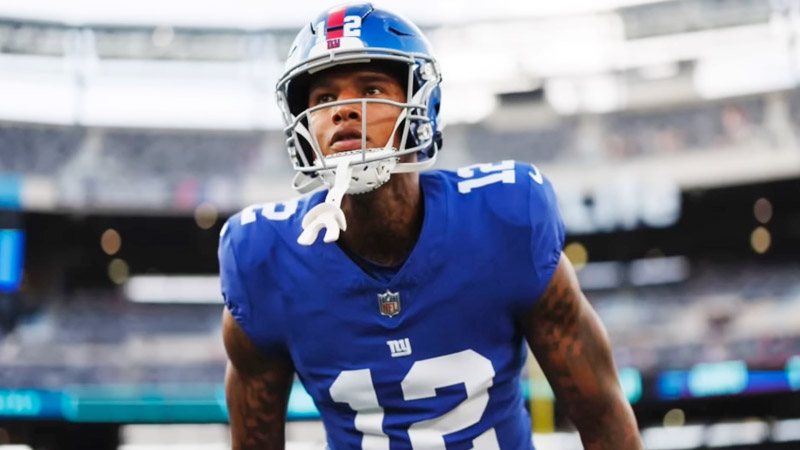
Solid tackling fundamentals, including proper form and wrapping up securely. The ability to bring down ball carriers in open-field situations.
Strong physical presence, especially for solid safeties playing near the line of scrimmage. The willingness to deliver hits and be a physical force in run support.
Speed and Agility
The ability to cover ground quickly, especially in deep coverage situations. Quick acceleration to close gaps and break on the ball.
Agility to change direction rapidly allows adequate coverage against agile receivers and tight ends—the ability to navigate through traffic in run support.
Football IQ and Recognition
The capacity to quickly diagnose offensive plays based on pre-snap reads and critical indicators.
It is recognizing patterns and tendencies in opponents’ playcalling. High football IQ to understand offensive and defensive schemes. She was making wise decisions in high-pressure situations.
Communication
Serving as a leader in the secondary, organizing and communicating coverages to other defensive backs. Providing direction to teammates and adjusting coverages as needed.
The ability to make pre-snap adjustments based on offensive formations and motions. Calling coverages and ensuring everyone is aligned correctly.
Versatility
They are effectively supporting against the run by filling run lanes and making tackles near the line of scrimmage.
They are shedding blocks and taking on blockers to allow other defenders to make plays if the defensive scheme requires the ability to blitz effectively and disrupt the quarterback.
Work Ethic and Preparation
Dedication to studying film to understand opponents’ tendencies, offensive formations, and individual player habits and using film study to gain a mental edge in the field.
They are well-prepared for each game, understand the game plan, and know the strengths and weaknesses of the opposing offence.
Successful safety combines these skills to contribute to the defence’s overall success.
The ability to seamlessly transition between coverage and support, coupled with strong decision-making and leadership, is essential for excelling in the safety position.
Challenges Faced by Safeties
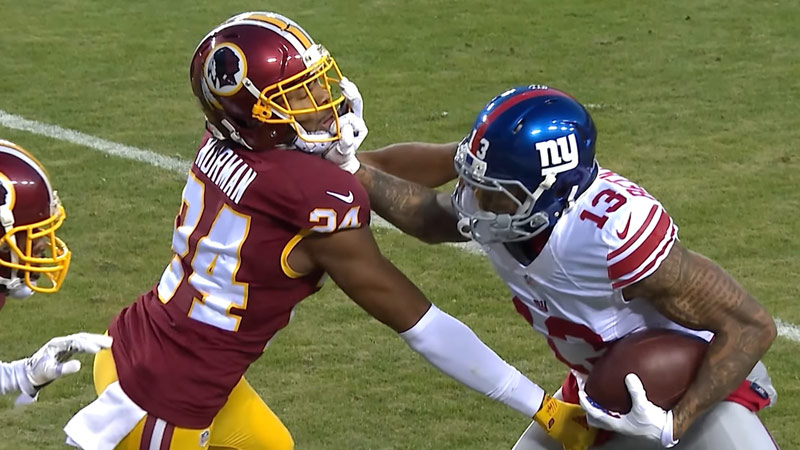
Safeties in American football face various challenges that require physical skills, mental acuity, and adaptability. Here are some of the challenges faced by safeties:
Balancing Pass Coverage and Run Support
Safeties must be versatile enough to excel in pass coverage and support.
Striking the right balance between dropping into coverage and providing run support near the line of scrimmage is a constant challenge.
Reading the Quarterback
Safeties are tasked with reading the quarterback’s eyes to anticipate throws and make plays on the ball.
However, skilled quarterbacks can manipulate safeties with pump fakes and misdirection, making it challenging to predict their intentions accurately.
Handling Play-Action
Play-action passes can freeze safeties, causing momentary hesitation as they try to determine whether it’s a run or a pass. This split-second decision-making is crucial and can impact the success of the defence.
Adjusting to Offensive Formations
Safeties must quickly analyze offensive formations and adjust their positioning and coverage responsibilities accordingly. Shifts in offensive personnel and formations can present challenges in recognizing play developments.
Communication and Coordination
Safeties are pivotal in communicating with other secondary members, including cornerbacks and linebackers.
Ensuring everyone is on the same page, making coverage adjustments, and providing effective communication can be challenging, especially in noisy stadium environments.
Mental Fatigue and Endurance
Like all players, Safeties can experience mental fatigue as the game progresses. Staying focused, making sound decisions, and maintaining high intensity throughout the game require mental endurance.
Overcoming Injuries
Safeties, like any other players, are susceptible to injuries. Overcoming injuries, playing through pain, and maintaining peak performance while dealing with physical limitations present additional challenges.
Adapting to Evolving Offensive Strategies
Offensive strategies evolve, introducing new concepts and plays. Safeties must adapt to these changes and continuously learn and refine their skills to stay effective in the ever-changing football landscape.
Successful safeties can navigate these challenges, showcase adaptability, and consistently contribute to their team’s defensive efforts.
Learning from experiences, making quick decisions under pressure, and continuously improving are essential for safety in the dynamic football environment.
FAQs
What is the primary role of free safety in American football?
The free safety is primarily responsible for deep pass coverage. Positioned in the centre of the field, they read the quarterback’s eyes, anticipate throws, and work to prevent long passes and big plays, acting as the last line of defence.
How does a strong safety differ from a free safety?
Strong safeties play closer to the line of scrimmage and often engage in run support.
They cover tight ends and may blitz the quarterback, requiring a more physical presence. Free safeties focus on deep coverage and ball-hawking skills.
What qualities make safety effective in pass coverage?
Effective safeties in pass coverage possess speed, agility, and strong ball skills. They can cover a large field area, scan plays, and exhibit the ability to track the ball, make interceptions, and disrupt passes.
How do safeties contribute to run support in American football?
Safeties contribute to support by filling run lanes, making tackles near the line of scrimmage, and providing additional support against ball carriers.
Strong safeties, in particular, are often involved in stopping the run and shedding blockers effectively.
What is the significance of communication for safety in the secondary?
Communication is crucial for safeties to ensure proper coverage assignments, coordinate with cornerbacks, and make pre-snap adjustments based on offensive formations.
Safeties serve as leaders in the secondary, facilitating effective teamwork and response to dynamic offensive strategies.
Wrapping Up
With its blend of strategy and athleticism, American football continues to capture fans’ hearts worldwide.
From the opening kickoff to the final whistle, the gridiron unfolds as a theatre of determination, showcasing the resilience and skill of athletes who navigate the game’s complexities.
Whether dissecting offensive plays or appreciating the defensive finesse of safeties, the enduring allure of American football lies in its ability to transcend sport, becoming a cultural phenomenon that unites fans in their shared passion for the game.
As the final seconds tick away, the legacy of each play etches itself into the annals of football history, leaving fans eagerly awaiting the next chapter in this gripping narrative.

